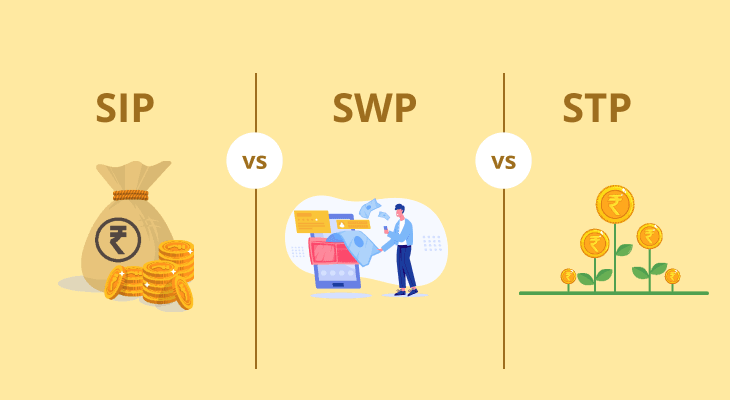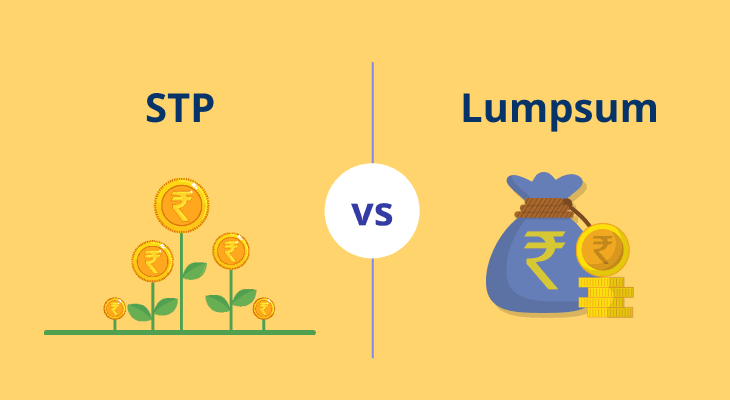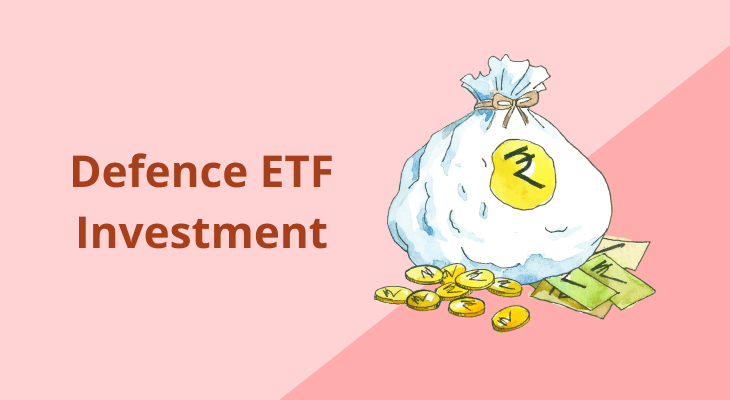
Table of content
- What is NAV in Mutual Funds?
- What is the Net Value of Assets for Mutual Funds?
- What is the Net Asset Value Formula?
- How is the Net Value of an Asset Relevant for Investors?
- Mutual Funds and NAV
- Role of NAV in the Performance of a Fund
- NAV in Closed-End Funds vs. Open-End Funds
- How is the Net Value of an Asset Calculated?
- NAV Calculation Example
Mutual Fund NAV: Meaning, Formula & Calculation
Investing in mutual funds may be confusing for beginners, especially with terms like Net Asset Value (NAV). But what is NAV and why is it important? NAV stands for Net Asset Value. It is the per-unit price of a mutual fund's assets after deducting liabilities. NAV, or net asset value, is the current worth of each fund unit. It is computed daily for open-end funds and shows how your investment performs on a daily basis.
Let's explore what NAV value is, how it's calculated, and why it's important for your investments. We'll also discuss the differences between NAV in open-end and closed-end funds and provide a basic example of how NAV is computed.
What is NAV in Mutual Funds?
Net Asset Value (NAV) is the per-unit price of a mutual fund plan. It represents the fund's intrinsic value and is computed daily for open-end funds, taking the fund's assets minus its liabilities and dividing by the total number of outstanding units. The NAV acts as a benchmark for investors to assess the fund's performance and determine whether to acquire or sell units.
The NAV plays an important role in estimating the market value of a mutual fund at any given point in time. It calculates the value of each unit in the fund, showing how much an investor would pay or get when purchasing or selling them. NAV, which starts at ₹10 during a New Fund Offer (NFO), varies depending on the fund's asset value and market circumstances. A larger NAV does not always indicate a better investment; instead, it represents the fund's asset growth and market valuation.
What is the Net Value of Assets for Mutual Funds?
Stocks are traded in real-time on the stock exchanges and bought and sold at their prevalent current market price (CMP). Mutual funds, on the other hand, are valued based on their total assets and liabilities, with NAV being calculated at the end of each trading day.
What is the Net Asset Value Formula?
The NAV formula is simple to use yet essential:
NAV = (Total Assets−Total Liabilities)/Total Outstanding Shares
Where:
Total Assets:
The asset component of a mutual fund includes:
The total market value of all investments held by the fund.
Cash reserves, cash equivalents, and any income receivables.
Accrued earnings such as dividends and interest payments.
The valuation of these assets is determined using the closing prices of the securities in the fund’s portfolio at the end of the day. Additionally, mutual funds often maintain a portion of their capital in liquid assets for operational flexibility.
Total Liabilities:
On the liabilities side, a mutual fund’s obligations may include:
Pending payments and outstanding dues to lenders.
Fees payable to fund managers, distributors, and other service providers.
Foreign liabilities such as payments due to international investors or pending transactions with overseas entities.
Operational costs, including salaries, administrative expenses, and management fees.
The net asset value of a mutual fund is derived by subtracting the total liabilities from the total assets as recorded at the close of the trading day. This calculation ensures transparency and helps investors assess the fund’s financial position accurately.
Total outstanding shares:
The number of units issued by the fund.
To ensure an accurate net asset value (NAV), it is essential to correctly account for all qualifying assets and liabilities, as any miscalculation can impact the fund’s valuation and performance assessment.
How is the Net Value of an Asset Relevant for Investors?
Net Asset Value (NAV) is a crucial metric for investors looking to evaluate and compare mutual funds. It represents the per-unit value of a mutual fund’s assets after deducting liabilities and helps you make informed decisions. Here a few reasons why NAV is a key evaluation metric for investors:
1. Understanding Fund Performance
NAV provides an objective measure of a mutual fund’s value. While a rising NAV indicates asset appreciation, it does not necessarily mean higher returns for investors, as mutual fund performance also depends on the fund’s underlying securities and market trends.
2. Transparency in Fund Valuation
Since NAV is calculated daily based on the closing prices of the fund’s holdings, it offers transparency. Investors can track NAV movements to understand how the fund’s portfolio is performing over time.
3. Basis for Buying and Selling Mutual Fund Units
- When investors purchase mutual fund units, they buy them at the NAV per unit.
- Similarly, when redeeming units, investors receive the NAV-based price.
- NAV helps investors determine the value of their holdings at any given time.
4. Not an Indicator of Fund Quality
A lower NAV does not mean a fund is undervalued, nor does a higher NAV imply premium quality. Mutual funds with different NAVs can still generate similar returns. Investors should focus on other factors like the fund’s historical performance, risk levels, and portfolio composition.
5. Helps in Comparing Mutual Funds
NAV is useful when comparing funds within the same category. However, investors should also consider factors such as:
- Expense ratio: Higher expenses can reduce net returns.
- Portfolio holdings: The quality of underlying investments matters more than NAV alone.
- Investment strategy: Different funds may have different approaches, such as growth-oriented or income-generating strategies.
6. Impact on Dividends and Capital Gains
When mutual funds declare dividends, the NAV reduces by an equivalent amount, reflecting the payout to investors. Similarly, capital gains distributions affect the NAV, making it important for investors to monitor these movements.
While NAV is an essential indicator in mutual fund investing, you should look beyond just NAV and evaluate other factors like risk, returns, fund manager expertise, and investment objectives before making decisions.
Mutual Funds and NAV
Importance of NAV in Mutual Funds
NAV (Net Asset Value) is essential for understanding how mutual funds perform. It reflects the per-unit worth of a fund's assets after removing liabilities. For investors, NAV provides a real-time measure of a fund's market value.
Daily Calculation for Open-End Funds
NAV is calculated daily for open-end mutual funds. This daily estimation provides transparency and allows investors to buy and sell units at current market values. It represents the fund's current market value as impacted by asset prices and liabilities.
Role in Closed-End Funds
Unlike open-end funds, closed-end funds issue a predetermined number of shares. NAV for closed-end funds is determined less frequently, usually weekly or monthly. This less frequent calculation might result in price swings depending on market conditions.
Understanding NAV as a Performance Metric
NAV is not a standalone measure of fund performance. A greater NAV does not necessarily indicate a good investment. It simply indicates the fund's asset value per unit. What matters more is how the fund's assets perform and how they fit into your investment goals.
Comparing NAV Across Funds
When comparing mutual funds, investors frequently use NAV as a comparison statistic. Other considerations to examine with NAV include fund goals, risk profile, and past performance. A lower NAV may signify lower entry prices, but the fund's performance determines returns.
Impact of NAV on Investor Decisions
NAV influences investor choices to acquire or sell mutual fund units. Investors trade at NAV-based pricing, assuring a fair value. It represents market sentiment about the fund and helps investors determine if it is a good fit for their investment plan.
Evaluating NAV Trends
Monitoring NAV movements over time might give information about a fund's growth and stability. Rising NAVs may reflect increasing asset values, higher investor confidence, or better fund management. In contrast, a dropping NAV may indicate market downturns or internal issues within the fund.
Role of NAV in the Performance of a Fund
Many investors mistakenly equate the Net Asset Value (NAV) of a mutual fund with a stock's price, assuming that a lower NAV indicates a more affordable and better investment. However, NAV does not directly reflect a fund's potential returns or overall performance. A fund with a lower NAV is not necessarily a better investment option.
NAV primarily represents the market value of a fund's underlying assets based on past performance. It is not a standalone metric for evaluating a fund’s profitability. Instead of relying solely on NAV, investors should focus on factors such as historical returns, expense ratios, and fund objectives. While NAV helps track a fund's daily value, it does not determine its future growth. Therefore, investors should analyse long-term returns and overall fund strategy before making investment decisions.
NAV in Closed-End Funds vs. Open-End Funds
Open-End Funds
Open-end funds are prevalent among investors due to their flexibility and liquidity. These funds continue to issue and redeem units based on investor demand. NAV is important in this context since it is computed daily and represents the fund's current market worth per unit. This daily computation promotes transparency and allows investors to purchase or sell units at the current NAV price.
Investors generally prefer open-end funds because of their easy availability and real-time pricing mechanism. Because NAV fluctuates daily depending on asset values and liabilities, it gives an up-to-date picture of the fund's value. This allows investors to evaluate the fund's performance and make smart investment decisions.
Closed-End Funds
Unlike open-end funds, closed-end funds issue a predetermined number of shares during their initial public offering (IPO). They often don't issue new shares or redeem existing ones when these shares are sold. This attribute frequently causes price volatility in the secondary market, when shares are purchased and sold by investors.
Closed-end funds' NAVs are calculated at a different frequency than open-end funds. Closed-end funds often compute NAV less often, such as once a week or month. This less frequent computation may provide NAV values that might not fully represent real-time market circumstances as open-end funds.
Investors in closed-end funds should be aware of these factors. While NAV is a basic measure of fund value, the market price of closed-end fund shares may be higher or lower than NAV. This difference reflects investor mood, supply-demand dynamics, and other market variables that affect share prices.
Key Takeaways
Transparency and Liquidity: Open-end funds provide daily NAV calculations, ensuring transparency and liquidity through the continual issuance and redemption of units.
Market Dynamics: Closed-end funds issue a certain number of shares and may trade at prices that are different from NAV based on market sentiment and supply-demand patterns.
Investment Considerations: When deciding between open-end and closed-end funds, think about your liquidity requirements, investment horizon, and tolerance for price swings relative to NAV.
How is the Net Value of an Asset Calculated?
The calculation of the Net Asset Value (NAV) follows two key approaches:
1. Daily Valuation of Assets
Mutual fund companies assess the total value of their investment portfolios at the end of each trading day, once the stock market closes at 3:30 pm. The closing prices from that day serve as the opening values for the next trading session.
To determine the NAV for the day, fund houses subtract all applicable expenses from the total asset value, ensuring a precise valuation. This helps investors track daily fluctuations in fund value.
2. General Asset Valuation
Beyond daily calculations, NAV also reflects the cumulative market price of a mutual fund’s shares. This figure is derived from the combined cost of all individual holdings within the fund. Since asset prices fluctuate based on market conditions, the NAV constantly changes, making it an essential indicator of a fund’s real-time market value.
NAV Calculation Example
To explain the NAV computation, consider the following example:
Let’s assume a mutual fund has:
Total assets: ₹1,000,00,000.
Total liabilities: ₹50,00,000
Total Outstanding Shares: 10,000,000
Using the NAV formula:
NAV = (1,000,00,000−50,00,000)/10,00,000 = ₹95
In this case, the net asset value per unit is ₹95.
Conclusion
Understanding NAV is important for comprehending the complexity of mutual fund investment. It acts as a benchmark for a fund's performance and value, assisting investors in making sound decisions. By knowing how NAV is determined, its implications for various types of mutual funds, and its significance in investment strategies, investors may improve their knowledge of finance and achieve their investment goals.
SIPs let you invest small amounts regularly, making it easier to stay consistent with your goals. With time, your money grows faster through compounding, helping you get the most out of your investments. Try our SIP Calculator to see how your money can grow and make smarter plans for your future.
FAQ
How To Check NAV Of Mutual Fund?
You may quickly get the NAV of a mutual fund by visiting the company's official website or financial web portals.
What Affects the NAV Of A Mutual Fund?
Multiple factors impact a mutual fund's NAV:
Asset Valuation: Fluctuations in the market value of the fund's holdings, which include stocks, bonds, and other securities.
Liabilities: Expenses such as fund management fees, operating expenditures, and other financial commitments that lower NAV.
Market Conditions: Economic considerations, interest rates, and global events all have an influence on asset values, which in turn affect NAV.
Should you invest in an MF with a high NAV?
The choice to invest should not be simply based on NAV. A high NAV implies that the fund's assets have increased, but this does not always imply that it is a good investment. Consider aspects such as fund performance, investment plans, and risk tolerance.
Is higher NAV better or lower?
Your investment plan determines whether higher or lower is preferable.
Lower NAV: Might provide more units for a given investment amount, with the potential for larger growth if NAV grows.
Higher NAV: Indicates historical growth but does not guarantee future success. Instead of focusing just on the fund's NAV, consider its returns and objectives.
What is a good NAV for a mutual fund?
There is no definitive answer to what is a good NAV for a mutual fund. A good NAV is determined by a variety of criteria, including the fund's previous performance, investment objectives, and financial goals. Instead of relying just on NAV, examine the fund's overall performance and fit into your investment plan.
What is meant by Net Asset Value in mutual funds?
Net Asset Value (NAV) is a mutual fund's value per unit, determined by subtracting liabilities from assets and dividing by outstanding shares.
What role does Net Asset Value (NAV) play in mutual fund performance?
The NAV serves as a baseline for tracking a fund's performance over time. Investors track NAV to analyse growth, compare funds, and make sound investment decisions based on past performance and market trends.
Can NAVs alter after market hours?
Yes, NAV can fluctuate beyond market hours depending on the valuation of assets and liabilities after the market closes. Asset price movements and fund fees can both result in NAV revisions.
How does NAV affect mutual fund transactions?
NAV determines the price per unit when purchasing or selling mutual fund units. Investors transact at NAV-based pricing, which ensures fair valuation and market liquidity.
How do NAV fluctuations affect investors?
The changes in NAV reflect the fund's performance and market circumstances. To make investments that are in line with their financial goals, investors should consider NAV trends as well as fund objectives and risk profiles.


